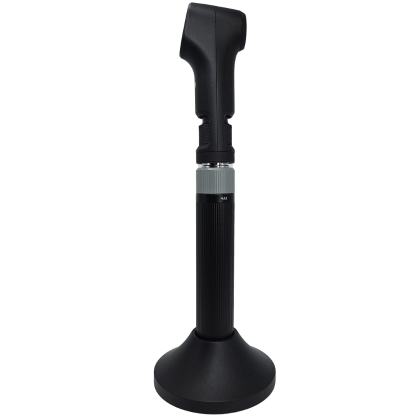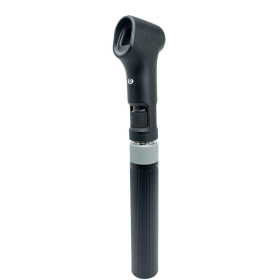Streak Retinoscope
- Superior accuracy
- Adjustable beam 360 degree
- Automatic turning-off function
- Suitable streak light
- Quick and fast measurement
What is a Streak Retinoscope?
A streak retinoscope, also named skiascope, uses its lighting system to illuminate the inside of the eyeball. The streak retinoscope is mainly used to measure the refractive state of the eye. Observing the reflection of light in the eye determines whether the eye is nearsighted, farsighted, or astigmatism and the specific degree, providing a basis for optometry and glasses fitting.
Streak Retinoscope by Power Supply
66 Vision has three models of streak ophthalmoscopes, which differ in charging methods and designs. The latest streak ophthalmoscope is a new design structure, which is lighter and more durable.
 YZ24D Streak Retinoscope
YZ24D Streak Retinoscope
Multi-functional Streak Retinoscope
66 Vision streak retinoscope develops a 360-degree stepless rotative filament for easily visible imaging. It can quickly and precisely capture the measurement of the astigmatism axis. The beam light can be in divergent, convergent, or parallel station.
Accurate And Easy-To-Use Streak Retinoscope
The streak retinoscopes by 66 Vision use ultra-fine filaments to pursue sharp and suitable streak light, which is comfortable for patients. Two-step adjustable brightness switches result in good operability. The automatic turning-off function protects the bulb for a long working life.
Mobile Retinoscope
The filament’s 360-degree rotation function and up-and-down movement make the streak retinoscopes from 66 Vision highly practical. The soft headrest and continuously adjustable brightness enhance the user experience. Quick recharging and anti-overcharging protect the battery
Streak Retinoscope Premium Applications
- Retinoscopy is a highly reliable optometry method that can objectively detect the refractive state of the subject’s eyes and obtain accurate refractive error results without relying on the subject’s subjective description.
- Retinoscopy is the best choice for infants and young children who cannot cooperate.
- When dealing with difficult optometry problems, such as irregular astigmatism, amblyopia, nystagmus, cataracts, and intellectual disabilities, retinoscopy can also provide reliable optometry results.
Trustable 66 Vision Streak Retinoscope
The streak retinoscopes produced by 66 Vision are trusted by ophthalmologists and certified by orthoptists worldwide. The industry-leading optics, slimline handle, and anti-reflection filter make our streak retinoscopes the best working partners for eye care professionals.


- Different imaging. A streak retinoscope is a special lens that can emit light onto paper to display an image. A spot retinoscope cannot produce an image.
- Different resolutions. A streak retinoscope has a relatively low resolution, generally 0.3-0.5, while a spot retinoscope has a relatively high resolution, generally 0.5-0.6.
- Different functions. A streak retinoscope can be used for close-up inspections, while a spot retinoscope can be used for long-distance inspections.
The retinoscope is different from the ophthalmoscope. Both the retinoscope and the ophthalmoscope are commonly used instruments in ophthalmic examinations, but there are obvious differences in their functions, principles, structures, observation methods, and presentation of examination results. They are two different ophthalmic examination tools.
Yes, we do. Our rechargeable ophthalmoscope and retinoscope can make a set. They are packed in one case and share one charger.
The streak retinoscope is an objective optometry device. It is used to determine the degree of refractive error of the subject through retinoscopy, and subjective optometry is performed based on this.
The streak retinoscope is more accurate and convenient than computer optometry in some aspects. For example, for cataract patients, computer optometry will directly display errors, while the retinoscope can also test the degree through peripheral shadow movement. For another example, when infants and young children have poor cooperation during optometry, the retinoscope can measure the real degree. In addition, for irregular astigmatism, amblyopia, accommodation spasm, and other conditions, the degree measured by computer optometry may be too high, but as long as you use the retinoscope, you can quickly and accurately measure the actual diopter of the eyes.



















